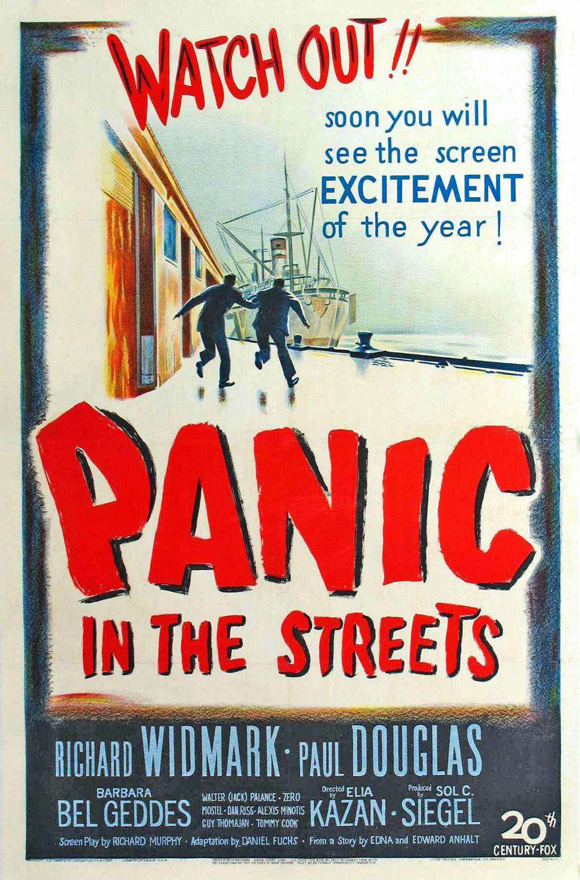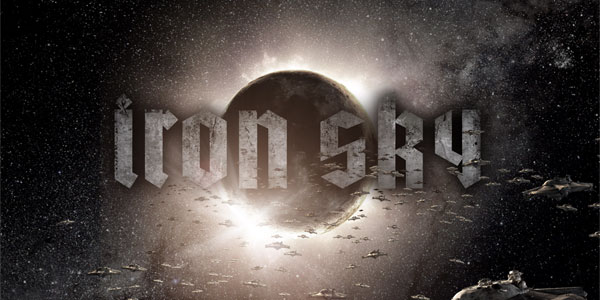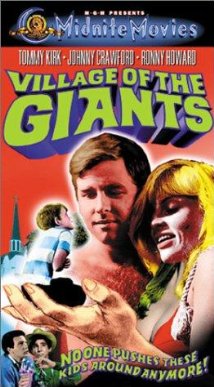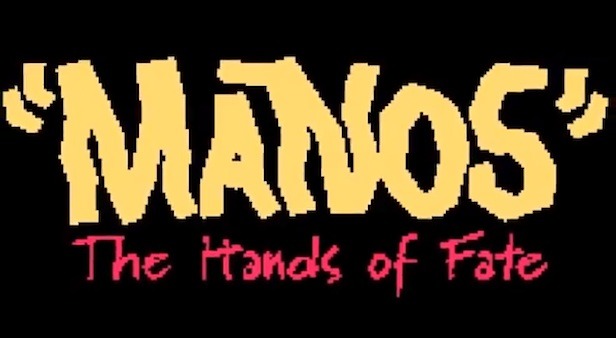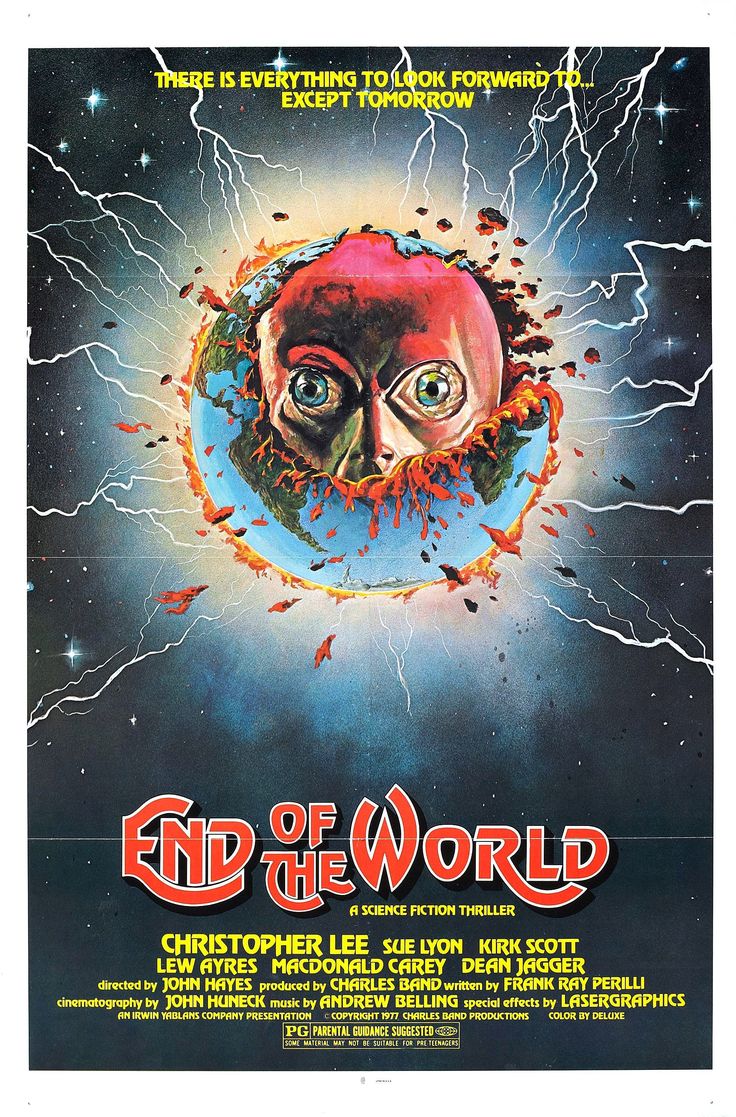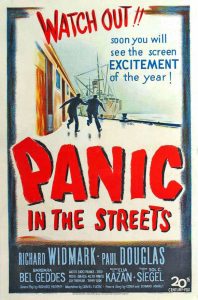
When a stiff turns up with pneumonic plague (a variant of bubonic plague), U.S. Public Health Service official Dr. Clinton Reed (Richard Widmark) immediately quarantines everyone whom he knows was near the body. Unfortunately, the stiff got that way by being murdered, and there’s a good chance that the murderer will start spreading the plague, leading to an epidemic. Enter Police Captain Tom Warren (Paul Douglas), who is enlisted to track down the murderer as soon as possible and avert a possible national disaster.
While Panic in the Streets is a quality film, it suffers from being slightly unfocused and a bit too sprawling (my reason for bringing the score down to an eight). It wanders the genres from noirish gangster to medical disaster, police procedural, thriller and even romance.
This is not director Elia Kazan’s best work, but saying that is a bit disingenuous. Kazan is the helmer responsible such masterpieces as A Streetcar Named Desire (1951), On The Waterfront (1954) and East of Eden (1955), after all. This film predates those, but Kazan has said that he was already “untethered” by the studio. Taking that freedom too far may partially account for the sprawl. The film is set in New Orleans, a city where Kazan “used to wander around . . . night and day so I knew it well”. He wanted to exploit the environment. “It’s so terrific and colorful. I wanted boats, steam engines, warehouses, jazz joints–all of New Orleans”.
Kazan handles each genre of Panic in the Streets well, but they could be connected better. The film would have benefited by staying with just one or two of its moods. The sprawl in terms of setting would have still worked. Part of the dilemma may have been caused by the fact that Panic in the Streets was an attempt to merge two stories by writers Edna and Edward Anhalt, “Quarantine” and “Some Like ‘Em Cold”.
The gangster material, which ends up in firmly in thriller territory with an extended chase scene near the end of the film, is probably the highlight. Not surprisingly, Kazan has said that he believes the villains are “more colorful–I never had much affection for the good guys anyway. I don’t like puritans”. A close second is the only material that approaches the “panic” of the title–the discovery of the plague and the attempts to track down the exposed, inoculate them and contain the disease. While there is plenty of suspense during these two “moods”, much of the film is also a fairly straightforward drama, with pacing more typical of that genre.
The dialogue throughout is excellent. The stylistic difference to many modern films could hardly be more pronounced. It is intelligent, delivered quickly and well enunciated by each character. Conflict isn’t created by “dumb” decisions but smart moves; events and characters’ actions are more like a chess game. When unusual stances are taken, such as Reed withholding the plague from the newspapers, he gives relatively lengthy justifications for his decisions, which other characters argue over.
In light of this, it’s interesting that Kazan believed that “propriety, religion, ethics and the middle class are all murdering us”. That idea works its way into the film through the alterations to the norm, or allowances away from it, made by the protagonists. For example, head gangster Blackie (Jack Palance in his first film role) is offered a “Get Out of Jail Free” card if he’ll cooperate with combating the plague.
The technical aspects of the film are fine, if nothing exceptional, but the real reasons to watch are the performances, the intriguing scenario and the well-written dialogue.
